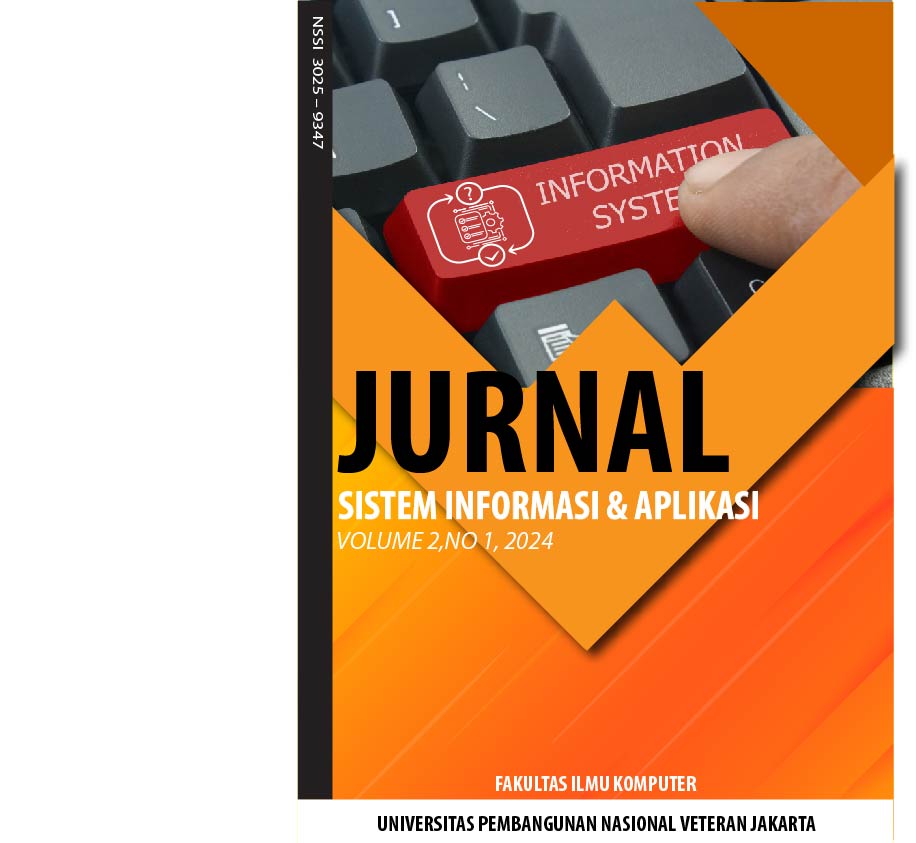Pemilihan Karyawan Getah Pinus Terbaik Di PT.INHUTANI V GM SUMBAGUT Menggunakan Metode SAW
Pemilihan Karyawan Terbaik Menggunakan Metode SAW
DOI:
https://doi.org/10.52958/jsia.v2i1.7330Abstrak
The best and qualified employees will make a company to be improved in its operations in the collection of pine resin to achieve the target. However, the constraints at PT INHUTANI V GM SUMBAGUT best employee award is still not optimal its implementation. Therefore, a system is needed that can assist the company in assessing the best employees optimally. Decision making to determine the best employee can be done by the company by assessing the performance that has been done by its employee at PT. INHUTANI V is influenced by several criteria, namely : Attendance, Teamwork, Colecction of the most pine sap, Responsibility, Sales of the most sap to the factory. This decision support system uses the Simple Additive Weighting (SAW) method where the decision-making process can be calculated based on the calculation of the weight of each criterion, so as to select the best employees in the company quickly.
Referensi
A. Putra, “Interpretasi Hak Asasi Manusia dalam Ideologi Pancasila dan Implikasinya Terhadap Persatuan dan Kesatuan di Indonesia,” J. HAM, vol. 13, no. 1, p. 1, 2022, doi: 10.30641/ham.2022.13.1-14.
I. Arief, A. Muluk, A. S. Indrapriyatna, and M. Falevy, “Pengembangan Antarmuka Portal Universitas untuk Meningkatkan Pengalaman Pengguna,” J. RESTI (Rekayasa Sist. dan Teknol. Informasi), vol. 5, no. 6, pp. 1052–1061, 2021, doi: 10.29207/resti.v5i6.3532.
G. W. Serbiadventa, M. Bezaleel, and J. Prestiliano, “IT-EXPLORE,” vol. 02, pp. 30–47, 2023.
Y. Sari, M. Arafah, and Novitasari, “Evaluasi Usability Sistem Informasi Akademik Dosen Menggunakan User Experience Questionnaire dan Heuristic Walkthrough,” J. RESTI (Rekayasa Sist. dan Teknol. Informasi), vol. 5, no. 2, pp. 247–253, 2021, doi: 10.29207/resti.v5i2.3022.
M. Multazam, “Perancangan User Interface dan User Experience pada Placeplus menggunakan pendekatan User Centered Design,” Univ. Islam Indones., vol. 1, p. 8, 2020.
W. Marta, “Jurnal Desain Komunikasi Kreatif,” vol. 1, no. 2, pp. 10–12, 2019, doi: 10.35134/judikatif.v131.1.
ISO 9241-210, “Ergonomics of human-system interaction — Part 210: Human-centred design for interactive systems,” Int. Stand., vol. 2, pp. 1–33, 2019, [Online]. Available: https://www.iso.org/standard/77520.html.
M. Azhar Abdillah, “Evaluasi Dan Perbaikan Rancangan User Interface Pada Website Surabaya Mengaji Menggunakan Metode Design Sprint,” 2019.
Witasari, D., & Jumaryadi, Y. (n.d.). Aplikasi Pemilihan Karyawan Terbaik Dengan Metode Simple Additive Weighting (Studi Kasus Citra Widya Teknik). Teknologi Informatika dan Komputer. https://jurnal.umj.ac.id/index.php/just-it





